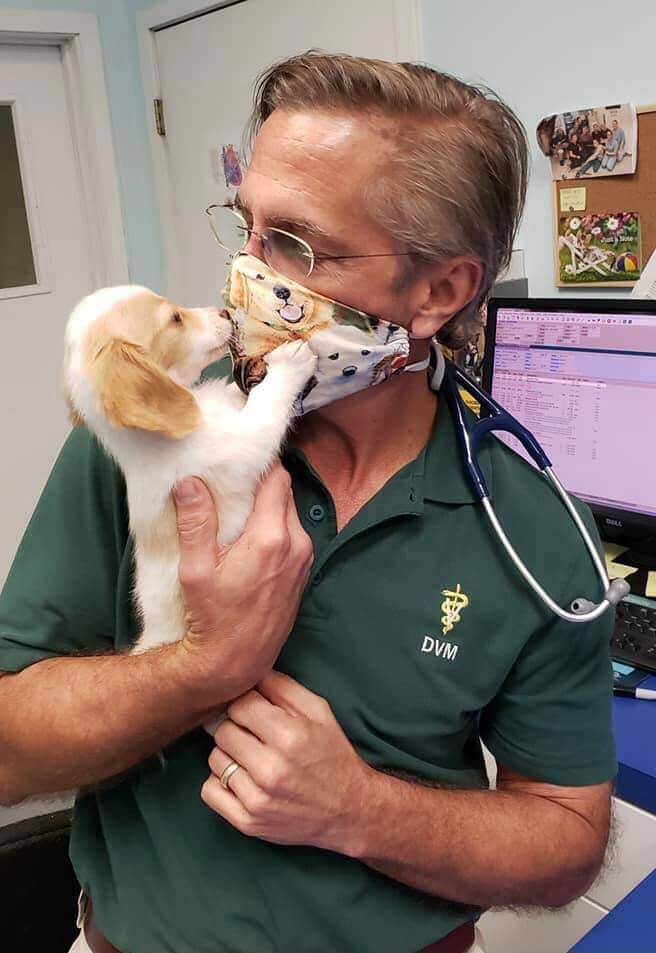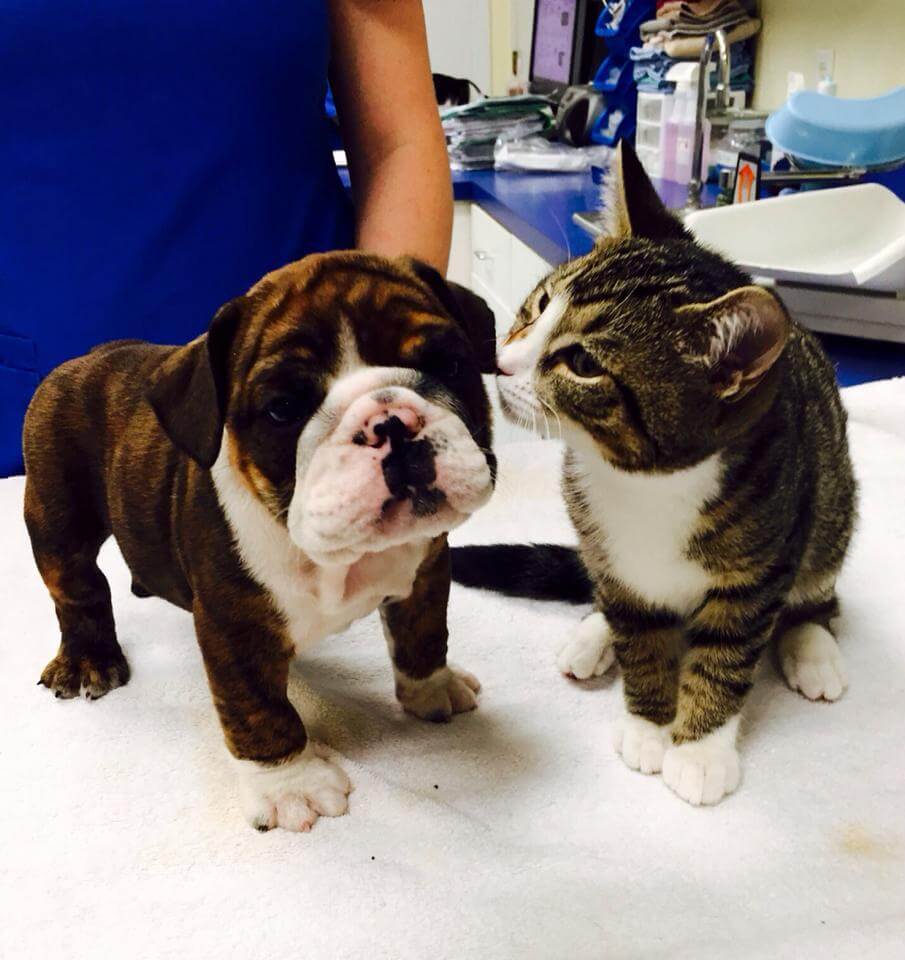
“I try to socialize him as much as I can. I take Cooper to the dog park, the day care and when I walk him I make sure that he meets everyone. I never take him anywhere that he has a bad time, but he is still not good with playing with others”.
There is quite a lot written about socialization, and in today’s world of pandemic isolation, this topic has hit close to home for many. Although there is much written about socialization, there is much that is misunderstood about what socialization is and what the proper method for appropriate socialization may be. Before embarking on a socializing plan, it is important that we understand the normal social and behavioral development of our dogs and how they best learn how to get along well with others.
Konrad Lorenz is recognized as one of the founding fathers of the field of ethology. He is best known for his studies of geese behavior and was the first to define a “critical period” as part of the principle of attachment or imprinting. In this case, the imprinting, or bond was formed between a newborn gosling and its caregiver. Later, John Paul Scott and John L. Fuller, reported in their 1965 book Genetics and the Social Behavior of the Dog, that in the course of development, there is a period during which puppies are most accepting of new stimuli, such as a novel item, sudden novel noise or activity. This period was referred to as the socialization period.
Imagine a litter of wild pups, safely hidden away in their den with their siblings and mom. Their first two weeks of life is referred to as the neonatal period. During this phase the pups are not behaviorally or developmentally able to respond to all stimuli. They pretty much can only eat, sleep, cry and wriggle around. They soon enter the transition period during which they become more coordinated and they begin to visually explore their world. There is no need for them to be frightened of something as they are safe in their den. Pups are noted, during this developmental phase, to startle easily but acclimate quickly to new and novel sights, sounds and objects. Makes sense why “mom” doesn’t allow the pups out of the den, or at least not very far. They may try to make friends with someone they shouldn’t. I find this similar to our concerns of the gullibleness and innocence of our young school children and the danger of a “stranger’s” ill intent.
Our wild pups from three weeks to about twelve weeks of age continue to develop their motor skills, social and intellectual development. This is a period during which there is ever increasing play and exploration of their environment. The events and experiences that occur within the litter during this period have a significant effect on future emotional and behavioral development of these pups. At this age our pups are learning how to get along with each other, not unlike the skills our children learn in 4k and Pre-k school. Development of social skills continues from 6-12 weeks as our puppies are now making additional social contacts with other pack members of differing ages and social status.
The concept of a critical period was later modified by Sir Patrick Bateson (1979) as he defined this period as a sensitive period during which particular events are especially likely to have long-term effects on individual development. The sensitive period may also be thought of as a window during which one learns certain skills and if not given the opportunity to learn those skills, may have lifelong implications. It is best to think of this period of time as a potential time for development of important behaviors. It may not be a certainty as even “old dogs” can learn new tricks, but it is a lot easier to learn those behaviors at the right time of development.
Learning occurs throughout life, but the period from birth to adulthood is characterized by intense development and change within the central nervous system. Early experiences affect a dog’s resiliency, or coping capacity, which also varies with genetics and the current environment. Resiliency develops in the young through exposure to micro stressors. Not given the opportunity to learn certain social skills due to isolation, dogs were more timid, fearful and expressed impaired learning. Dogs removed early from their litter (between 4 and 6 weeks of age) are more at risk of fearfulness on walks, reactivity to noises, toy and food possessiveness and separation anxiety. Exposure early in life to a stimulus before the period of time that is appropriate for the pup, as long as the event is not traumatic, will have no ill effect. If, however, the pup is deprived of those opportunities it could have serious lifelong social implications.
Think about socialization as giving your pup opportunities to interact and explore his world and learn how to live with others. These are skills that must be experienced and practiced. Dogs should be exposed, as early as possible, to all relevant social interactions early in life in a non-traumatic manner. Remember that every event occurs within a context and each context is an entirely new circumstance to learn about. Contexts include factors such as the location, the people and animals present, the resources present as well as the activities occurring. An event such as your pup meeting an individual while on his leash during a walk in the neighborhood is very different from meeting the same individual off leash while at the dog park.
The earlier dogs can learn about the broad-scale social and physical environment in which they live, the better. If protected from stimuli, they may react inappropriately when exposed later. I too once instructed my clients to not allow their pups out and to not introduce them to other dogs until all vaccinations were complete. This was really bad advice. We were concerned about infectious diseases such as Parvo Virus, however, the best method for protecting your pup from these diseases is by providing good nutrition, proper housing, current vaccinations and good parasite prevention. By “shielding” them, we prevented them from learning those important life skills resulting in some having significant anxiety and social disorders.

Socialization is a learning process using humane and considerate methods of exposure in which an individual dog learns to accept close proximity to various other species or to other dogs. It is easiest to accomplish this during the sensitive period of development, when they are most accepting and adaptive to new or novel contexts.
Socialization program
- Identify situations your pup will probably encounter as an adult living with his family and include these as part of socialization. This may include car rides, walks on a leash in the neighborhood, and hanging out with friends at the boat club. It also includes routine care activities such as trimming claws, brushing and taking medicine. If it’s an activity you and your family enjoy such as hiking, boating or watching sunsets from the dock, your pup needs to be experiencing this as well.
- Expose your pup to the new situation in a non confrontational and calm manner. Do not force her to interact if she expresses signs of fear or anxiety. This is most often exhibited as hesitation or cowering. If they balk at a new item , try sitting with them nearby. Do things such as slow, calm petting strokes and soft talking to help your pup relax. Whenever your pup shows signs of calmness and relaxation, be sure to praise.
- A small amount of hesitation to a new situation is normal and a healthy part of learning. Be sure to reward confidence with praise and treats. If showing normal reluctance, given the opportunity, they will gradually show greater relaxation and interest after a few exposures. It is important to allow them to move away from the new exposure. Do not force them by pushing them toward or making them stay by standing on the leash. This only causes increased anxiety and is inhibitory to the learning of healthy, beneficial behaviors.
- Be sure to address any behavior concerns early; they will not just go away. If you note your puppy is getting more anxious, try setting up a slower progression of exposure. Remember you are not teaching any specific behavior, but rather introducing novel circumstances and rewarding calm, relaxed and confident behavior. You are not waiting for a specific behavior to be offered to gain the reward, you are rewarding the desirable emotion.
- If in doubt, discuss your concern with a veterinary behaviorist, your veterinarian or a qualified trainer.
There are various programs offered by trainers for puppies. Here are a few things you want to look for in selecting a good program for your dog.
-The location for puppy kindergarten should be reasonably quiet so you and your pup can hear the teacher/ leader. Too much noise and activity can be over-stimulating for your pup.
-All of the family members should be encouraged to participate in the classes, especially children. Learning good social skills is good for everyone and having everyone on the same page can make things much simpler for your pup to learn.
-A gentle approach is essential. The emphasis of the classes should be on guiding your pup to behave appropriately using rewards such as food, toys and praise. At no time is it appropriate to use aversive techniques such as using prong, choke or shock collars. At no time should you be instructed to hold puppies by their scruff or roll and pin them on their back. The teacher should also not instruct you to yell at, bite, bark or growl at your pup. Harsh corrections such as these should never be tolerated or accepted as an appropriate training technique.
-Pups should be between 8 and 14 weeks of age when beginning a class. The intent for this is to have all the pups at a similar maturity level. Some wiggle room for age is ok as not all dogs mature at the same pace.
